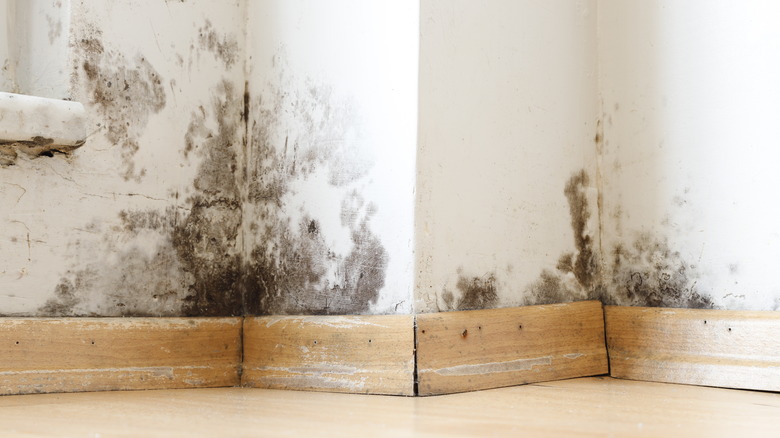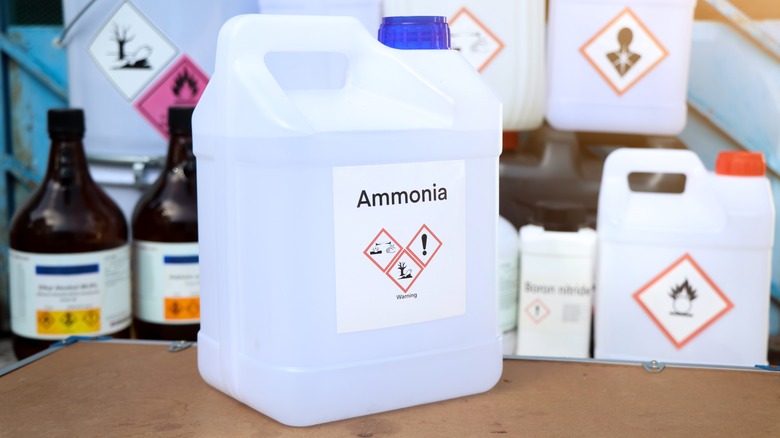The Ingredient To Reach For When Controlling Mildew Around The Home
Mildew, a form of mold, can be a persistent issue in many homes, particularly in damp and humid environments, making bathrooms, basements, and kitchens susceptible areas. Its unsightly appearance and potential health hazards make it a priority to address promptly. The battle against mildew requires a comprehensive approach, combining preventive measures and effective solutions, and one powerful ally to consider when combatting this unwanted invader is ammonia. This household staple, often found in cleaning products, can be a game-changer when tackling mildew growth in your home.
Ammonia boasts powerful antimicrobial properties that make it a potent disinfectant, resulting in it being highly effective in killing mildew and preventing its recurrence. The affordability and widespread availability of ammonia make it a practical choice for homeowners seeking to eliminate this persistent intruder. Here's how ammonia should be a key ingredient when treating mildew, as well as safe and effective application techniques to consider when using ammonia.
How to use it safely
Mildew tends to thrive in acidic environments, according to PLOS Pathogens. Ammonia, being alkaline, creates an unfavorable environment for the growth and survival of mildew. This alteration in pH disrupts the conditions conducive to mildew development, hindering its ability to spread. Ammonia can also penetrate porous surfaces, making it effective for cleaning and disinfecting areas where mildew might be deeply rooted. This ensures that it not only addresses the visible signs of mildew, but also targets any spores that might remain.
However, while ammonia proves to be a formidable ally, safety is paramount during its application. Adequate ventilation is essential, as the fumes can be strong. To strike the right balance between efficacy and safety, diluting ammonia with water in a well-ventilated area before application is recommended.
When applying ammonia, consider using a sponge or cloth to ensure even distribution across affected surfaces. Allowing the solution to sit before gently scrubbing enhances its effectiveness. Incorporating ammonia into a regular cleaning routine serves as a proactive measure, preventing mildew from making an unwelcome comeback. Never mix ammonia with bleach, as the chemical reaction that occurs releases chloramine vapors and, in some cases, lethal chlorine gas. This poses severe health risks, including respiratory problems and eye irritation. It is crucial to use these cleaners separately in well-ventilated spaces to ensure safety during cleaning routines.

